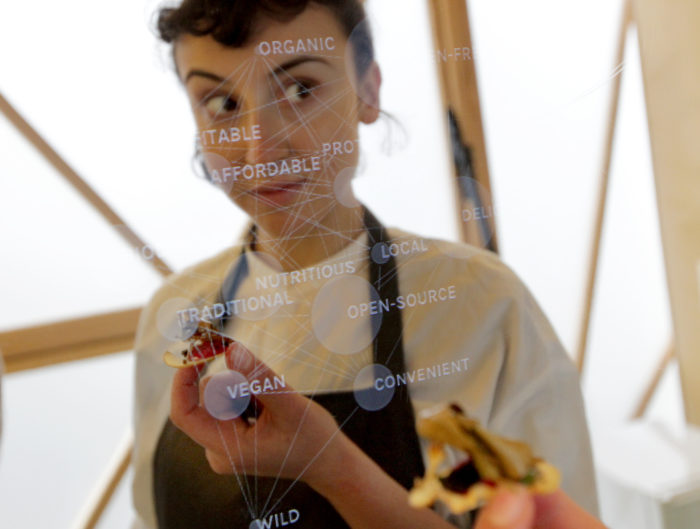Our industrial food system isn’t working. Many food start-ups and academic research projects are promising innovations that will lead to ecological, economic and social sustainability in the food sector. Unfortunately, many of these so-called innovations perpetuate the industrial approach to agriculture and food that got us into trouble in the first place. Commercial food innovation is often disconnected from variations in local eco-systems and regional cultures. The emphasis is still on making food as efficient as possible instead of making food systems biodiverse, just, beautiful and resilient. We need better criteria for assessing innovations within the food system.
Soylent, for example, has developed a keen user base, but abandons pleasure and flavour in favour of food as fuel. Hampton Creek has done interesting research on commercially viable plant proteins to replace animal products, as in its product Just Mayo, but its research is largely proprietary. Both products treat food as a system of highly fungible commodities that can be produced, processed, shipped and eaten anywhere. When projects are more open, they can be improved by taking into account a wider range of organisms and ingredients in their databases. IBM’s Chef Watson, the online recipe creator, is a very interesting tool, but it draws on recipes that deeply limit the contexts in which it can be used. When introducing Chef Watson to our friends in Ireland, for instance, we could not find black pudding in the database, but we could find caviar. Hopefully, Chef Watson and cognitive cooking can become tools that are extensible and applicable to a wider set of agro-ecological and cultural conditions.
Growing and eating locally is one part of transforming our food system into something more desirable, and it is worth considering how databases of taste can contribute to the relocalisation of food cultures. Re-establishing or re-inventing regional food cultures, economies and infrastructure won’t succeed if it is primarily an exercise in romanticising an imagined historical and ecological moment, however. People, organisms and ingredients are on the move. Immigrants and refugees arrive. Climates change and preferences shift. Regional cuisines are important, but should not be frozen in time or made pure. Articulating a more just, biodiverse and beautiful food system will require imagination and an acceptance of change. We will have to assemble and combine ingredients and flavours that have never been put together before.
Our Recombinatorial Cuisine research initiative uses data to sort and recombine ingredients in new ways, with particular attention to attributes that are not included in commercial databases about food. The project creates new recipes. Instead of developing algorithms and databases with the most standardised and universally applicable attributes, our work focuses on smaller and more particular datasets and audiences, using digital technology for culinary inspiration without losing the biological, geographic and ecologic specificity of gastronomy.

This research has proved to be of interest to people who are excited about the potential of digital technology to aid creativity and gastronomy, but who also care deeply about the specific regional, genetic and cultural provenance of food. As we build each database and algorithm we work with a range of collaborators and groups to visit the sites of food production, gather food ingredients, test flavours and recipes, and refine our work. This process of assembly and interaction with growers, cooks and eaters is a key aspect of the research. Projects around Recombinatorial Cuisine are most often shared in the form of pop-up food stands, which put the database and the recombined food out for people to touch, taste, debate and take home.
Even though information technology would seem to promise endless variation and the ability to document and improvise with agricultural biodiversity more thoroughly, the opposite seems to be happening. Technology start-ups have an unrelenting focus on efficiency and fungibility, which may lead to a food system that is highly efficient, but also one that is less interesting and more brittle. Using the criteria of justice, biodiversity and beauty to examine the problems facing the food industry will yield outcomes that are less efficient, but more desirable and more resilient.
This article originally appeared in LS:N Global on May 17, 2016.
